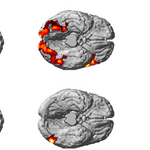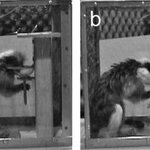Science category landing
Social Sciences

Alzheimer's disease (AD) affects as much as 10% of the world population above 65 years of age but after years of research it is still not understood exactly how the disease appears and, even less, how to treat it.
But work just published in The EMBO Journal opens the door to new ways for disease intervention by showing that lipids found throughout the brain can dissolve the large insoluble protein plaques characteristic of the disease, releasing their soluble protofibrillar components, and also that it is the soluble components and not the insoluble plaques that provoke neural death.
These…

The roundworm C. elegans, a staple of laboratory research, may be key in unlocking one of the central biological mysteries: why we sleep.
Researchers at the University of Pennsylvania School of Medicine report in this week’s advanced online edition of Nature that the round worm has a sleep-like state, joining most of the animal kingdom in displaying this physiology. This research has implications for explaining the evolution and purpose of sleep and sleep-like states in animals.
In addition, genetic work associated with the study provides new prospects for the use of C. elegans to identify…

A ninety minute daytime nap helps speed up the process of long term memory consolidation, a recent study conducted by Prof. Avi Karni and Dr. Maria Korman of the Center for Brain and Behavior Research at the University of Haifa found.
"We still don't know the exact mechanism of the memory process that occurs during sleep, but the results of this research suggest the possibility that it is possible to speed up memory consolidation, and in the future, we may be able to do it artificially," said Prof. Karni.
Long term memory is defined as a permanent memory that doesn't disappear or that…

The activation pattern evoked by a familiar object isn’t located in just one place in the brain, according to team of Carnegie Mellon University computer scientists and cognitive neuroscientists who combined methods of machine learning and brain imaging and found a way to identify where people’s thoughts and perceptions of familiar objects originate in the brain.
For instance, thinking about a hammer activated many locations. How you swing a hammer activated the motor area, while what a hammer is used for, and the shape of a hammer activated other areas.
This new method was developed over…

The brain remains a complicated machine but researchers from the Center for the Neural Basis of Cognition (CNBC), a joint project of Carnegie Mellon University and the University of Pittsburgh have made progress in explaining why, when we notice a scent, the brain can quickly sort through input and determine exactly what that smell is.
To do it, they created a biologically inspired algorithm for analyzing the brain at work and they have described a mechanism called “dynamic connectivity,” in which neuronal circuits are rewired “on the fly” allowing stimuli to be more keenly sensed.
“If you…

Mood and anxiety disorders are the most common mental disorders but psychiatrists remain divided as to how to define and classify them.
Definitions in the upcoming Diagnostic and Statistical Manual (DSM-V), the “gold standard” reference book for psychiatrists will have at least have the benefit of high quality longitudinal data.
Ian Colman, Ph.D., lead author of “A Longitudinal Typology of Symptoms of Depression and Anxiety Over the Life Course”, notes, “Rarely have classification systems in psychiatry considered the nature of symptoms of depression and anxiety over time; however research…

You study the menu at a restaurant and decide to order the steak rather than the salmon. But when the waiter tells you about the lobster special, you decide lobster trumps steak. Without reconsidering the salmon, you place your order—all because of a trait called “transitivity.”
“Transitivity is the hallmark of rational economic choice,” says Camillo Padoa-Schioppa, a postdoctoral researcher in HMS Professor of Neurobiology John Assad’s lab. According to transitivity, if you prefer A to B and B to C, then you ought to prefer A to C. Or, if you prefer lobster to steak, and steak to salmon,…

Brain overgrowth in the latter part of an infant’s first year may contribute to the onset of autistic characteristics, according to research presented at the American College of Neuropsychopharmacology (ACNP) annual meeting. These findings support concurrent research which has found brain overgrowth in autistic children as young as two years old.
Lead researcher Joseph Piven, M.D., Director of the Neurodevelopmental Disorders Research Center at the University of North Carolina, Chapel Hill and an ACNP member, says that behavioral studies of infants at high risk for autism suggest that the…

Waiters will pick up an inverted glass with their thumb pointing down if they plan to pour water into the glass. Grabbing thumb-down may feel awkward at first but it allows the waiter to be more comfortable when the glass is turned over and water poured inside.
The way human adults grasp objects is typically influenced more by their knowledge of what they intend to do with the objects than the objects' immediate appearance. We perform these tasks, and even tasks like grabbing a pencil, without thinking, but the motor planning necessary to grasp an object is quite complex.
Psychologists call…

A missing brain protein may be one of the culprits behind autism and other brain disorders, researchers at MIT's Picower Institute for Learning and Memory report in the Dec. 6 issue of Neuron. Li-Huei Tsai, Picower Professor of Neuroscience at MIT, has uncovered an enzyme that is key to that protein's activity.
Synapses are complex structures consisting of ion channels, receptors and intricate protein complexes that all work together to send and receive signals. Improperly formed synapses could lead to mental retardation, and mutations in genes encoding certain synaptic proteins are…